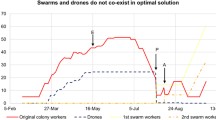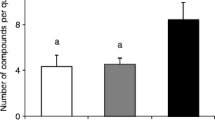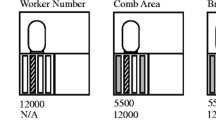Summary
The reproductive rate of unmanaged European honeybee races was studied in Kansas, U.S.A. Colonies produced a mean of 3.6 daughter colonies per original queen during one year. This high reproductive rate was largely due to the frequent occurrence of afterswarms, a factor not adequately considered in previous studies. The rate of afterswarming was influenced by at least two factors: the amount of sealed brood (pupae) in the colony and the season when swarming occurred. Factors which may influence the survival and subsequent reproduction of prime swarms and afterswarms are discussed.
Resume
Le taux de reproduction d'abeilles de races européennes non domestiquées a été étudié dans le Kansas (U.S.A.). Chaque colonie avec la même reine a produit 3,6 coloniesfilles en moyenne pendant un an. Ce taux de reproduction élevé est essentiellement dû à des essaims secondaires; ce facteur n'a pas été suffisamment considéré jusqu'à présent. Le taux d'essaimage secondaire est influencé par au moins deux facteurs: la quantité de couvain operculé dans la colonie et la saison où l'essaimage se produit. Nous discutons aussi les facteurs qui peuvent affecter la survie et la reproduction des essaims primaires et secondaires.
Similar content being viewed by others
References
Avitable A., Kasinkas J. R., 1977. — The drone population of natural honeybee swarms.J. Apic. Res., 16, 145–149.
Burgett D. M., Morse R. A., 1974. — The time of natural swarming in honey bees.Ann. Ent. Soc. Am., 67, 719–720.
Butler C. G., 1958. —The World of the Honeybee. Collins Publ., London, England, 223 p.
Demuth G. S., 1921. — Swarm control.Farmers Bull. U. S. Dept. Agric., no. 1198, 1–28.
Fell R. D., Ambrose J. T., Burgett D. M., Dejong D., Morse R. A., Seeley T., 1977. — The seasonal cycle of swarming in honeybees.J. Apic. Res., 16, 170–173.
Huber F., 1794. — Nouvelles observations sur les abeilles.
Maeterlinck M., 1908. —The Life of the Bee. Dodd, Mead, and Company Publ., New York, 427 p.
Michener C. D., 1974. —The Social Behavior of the Bees. Belknap Press, Cambridge, Massachusetts, 404 p.
Ribbands R., 1953. —The Behaviour and Social Life of Honeybees. Bee Research Association Ltd., London, England, 352 p.
Seeley T. D., 1978. — Life history strategy of the honey bee,Apis mellifera.Œcologica, 32, 109–118.
Seeley T. D., Morse R. A., 1976. — The nest of the honey bee (Apis mellifera L.).Insectes Sociaux, 23, 495–512.
Simpson J., 1957. — Observations on colonies of honeybees subjected to treatments designed to induce swarming.Proc. Roy. Ent. Soc. London, (A),32, 185–192.
Simpson J., 1959. — Variation in the incidence of swarming among colonies ofApis mellifera throughout the summer.Insectes Sociaux, 6, 85–99.
Swammerdam, 1737. — Biblia Naturae.
Wilson E. O., 1971. —The Insect Societies. Belknap Press, Cambridge, Massachusetts, 548 p.
Winston M. L., 1979. — Intra-colony demography and reproductive rate of the Africanized honeybee in South America.Behav. Ecol. Sociobiol., 4, 279–292.
Winston M. L., Otis G. W., 1978. — Ages of bees in swarms and afterswarms of the Africanized honeybee.J. Apic. Res. 17, 123–129.
Winston M. L., Taylor O. R., (in press). Factors preceding queen rearing in the Africanized honeybee (Apis mellifera) in South America.Insectes Sociaux.
Author information
Authors and Affiliations
Additional information
Contribution 1735 from the Dept. of Entomology, University of Kansas, Lawrence, Kansas 66045 U.S.A.
Rights and permissions
About this article
Cite this article
Winston, M.L. Swarming, afterswarming, and reproductive rate of unmanaged honeybee colonies (Apis mellifera). Ins. Soc 27, 391–398 (1980). https://doi.org/10.1007/BF02223731
Received:
Accepted:
Issue Date:
DOI: https://doi.org/10.1007/BF02223731




